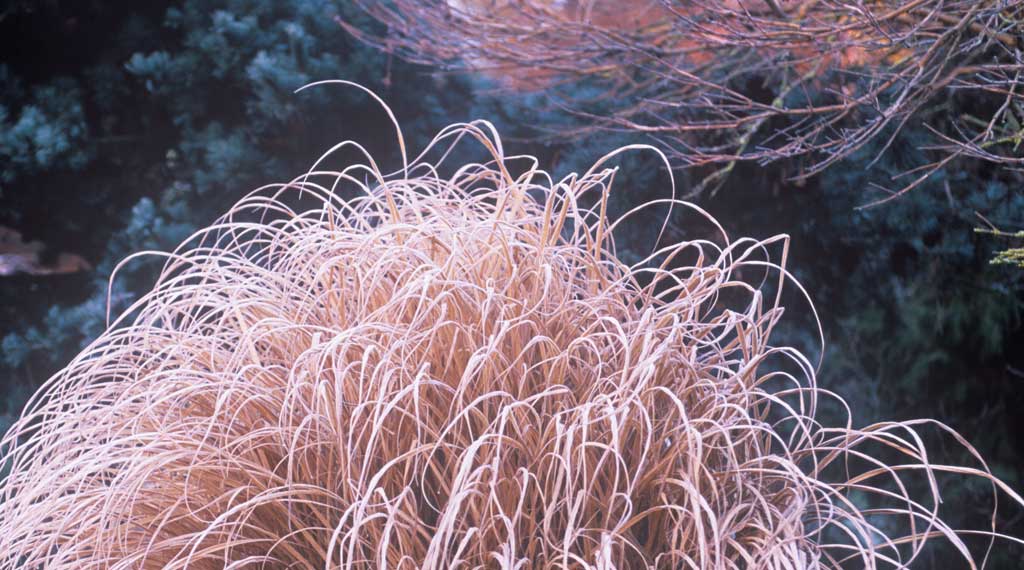
Miscanthus sinensis ‘Morning Light’
(Japanese silver grass)
If you had to choose one miscanthus to use in your garden – to grow well, have good summer-long foliage and hold up nicely in winter – you could not choose anything better than M. s. ‘Morning Light’. With narrow white-striped leaves, upright but not rigid structure and the ability to act as a specimen or blend in with perennials in a bed or border, M. s. ‘Morning Light’ is the perfect plant. Growing to 120–150 cm (4–5 ft.) in most situations, it is suitable for most gardens. Like many non-evergreen grasses that gradually die back in late autumn, the foliage still offers a long period of interest during winter.
Period of interest
Early summer to late winter.
Above all other miscanthus, M. s. ‘Morning Light’ is applauded for its grace, stature and ability to stand up to winter, remaining attractive longer than any other to date. The species M. sinensis is native to mountainous and lowland areas throughout Japan, as well as China and Korea, forming clumps with grassy blades centred by a silvery white stripe. Reddish or silvery inflorescences on stems 90–240 cm (3–8 ft.) or taller occur in late summer. The foliage dies back in autumn, fading to straw colour and then greyish beige with considerable attraction in winter. The main reason for growing M. s. ‘Morning Light’ (and most other variegated grasses) is for foliage, so if necessary flowering stems could be cut away before seed develops. M. s. ‘Morning Light’ was admired by the Japanese for years before it was ‘discovered’ in 1976 and brought to the U.S. National Arboretum in Washington, D.C., where it was later named M. s. ‘Morning Light’ by Kurt Bluemel.
It forms a tight 120–150-cm (4–5-ft.) clump of narrow, erectly held light green leaves, finely margined with white. Similar in habit to the dark-green-leaved M. s. ‘Gracillimus’, it shares with it a shyness to flower in cooler summer climates. The plumes are relatively small and usually sparse, rather detracting from the gracefully outward-arching late summer leaves. In late autumn or early winter, depending on climate, growth dies back and leaves turn to brown then beige, standing up against wind and snowfall and continuing to contribute to the winter garden.
The foliage should be cut back to 10 cm (4 in.) in late winter or earlier if appearance is messy, using sharp secateurs or a powered hedge trimmer. In milder regions, if foliage is still green, cut back to 30 cm (1 ft.). Miscanthus will grow in most soils where not too dry and will normally be taller in moist fertile soils. M. sinensis cultivars make spreading clumps that eventually become thick and congested. A sharp spade in early spring will still need some effort to curb their outer basal growth, and even more effort may be required every few years to lift clumps and split, replanting with younger outside material. Older clumps are more inclined to flop after heavy rains or wind; during a long, wet growing season in Britain in 2007, this tendency was exacerbated in the plants’ taller growth. Many dwarfer-growing forms are now available for smaller gardens, but in my view there should always be room for M. s. ‘Morning Light’. 120–150 cm (4–5 ft.) Å~ 90–120 cm (3–4 ft.)
Flowers late summer to autumn, if at all.

